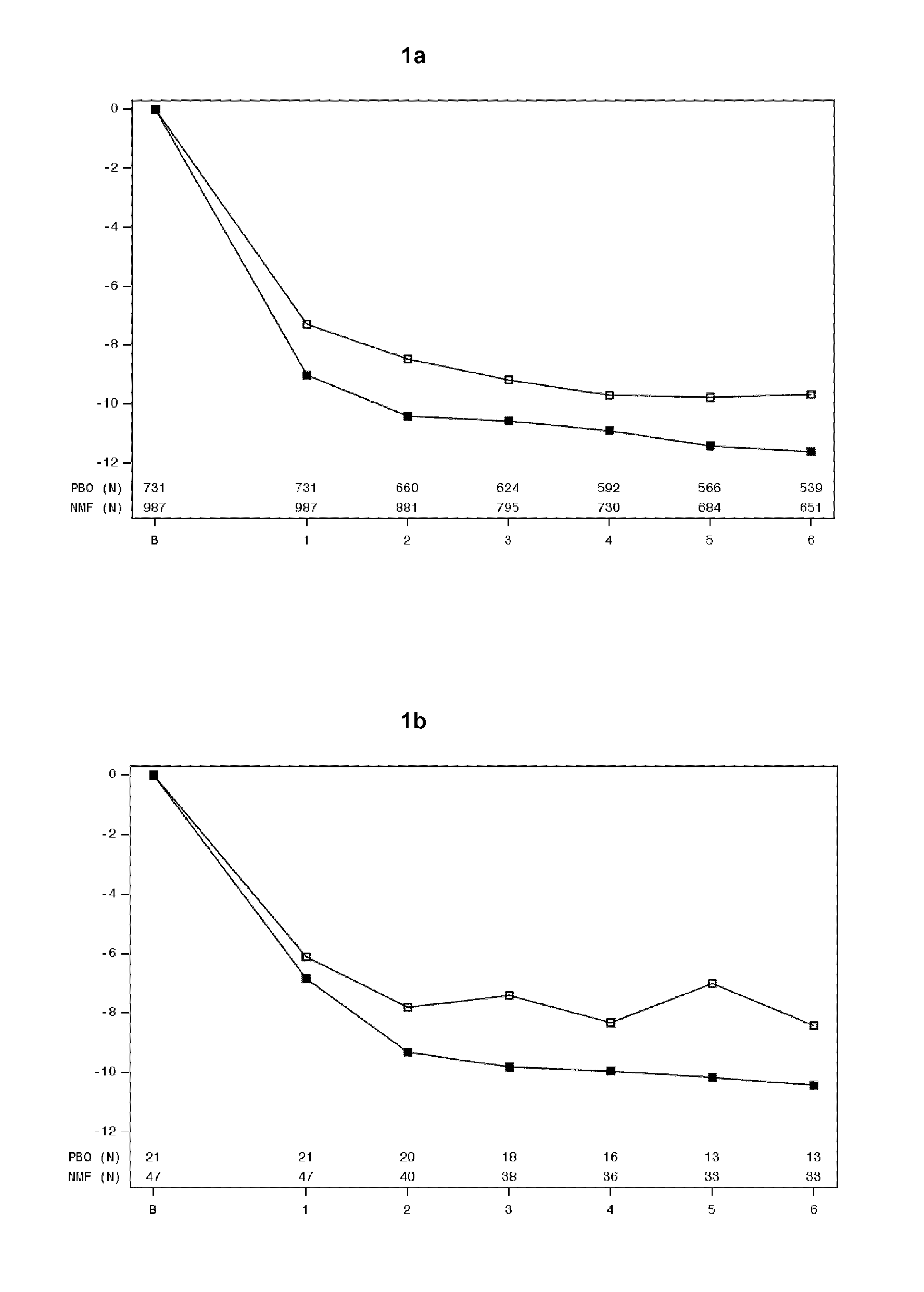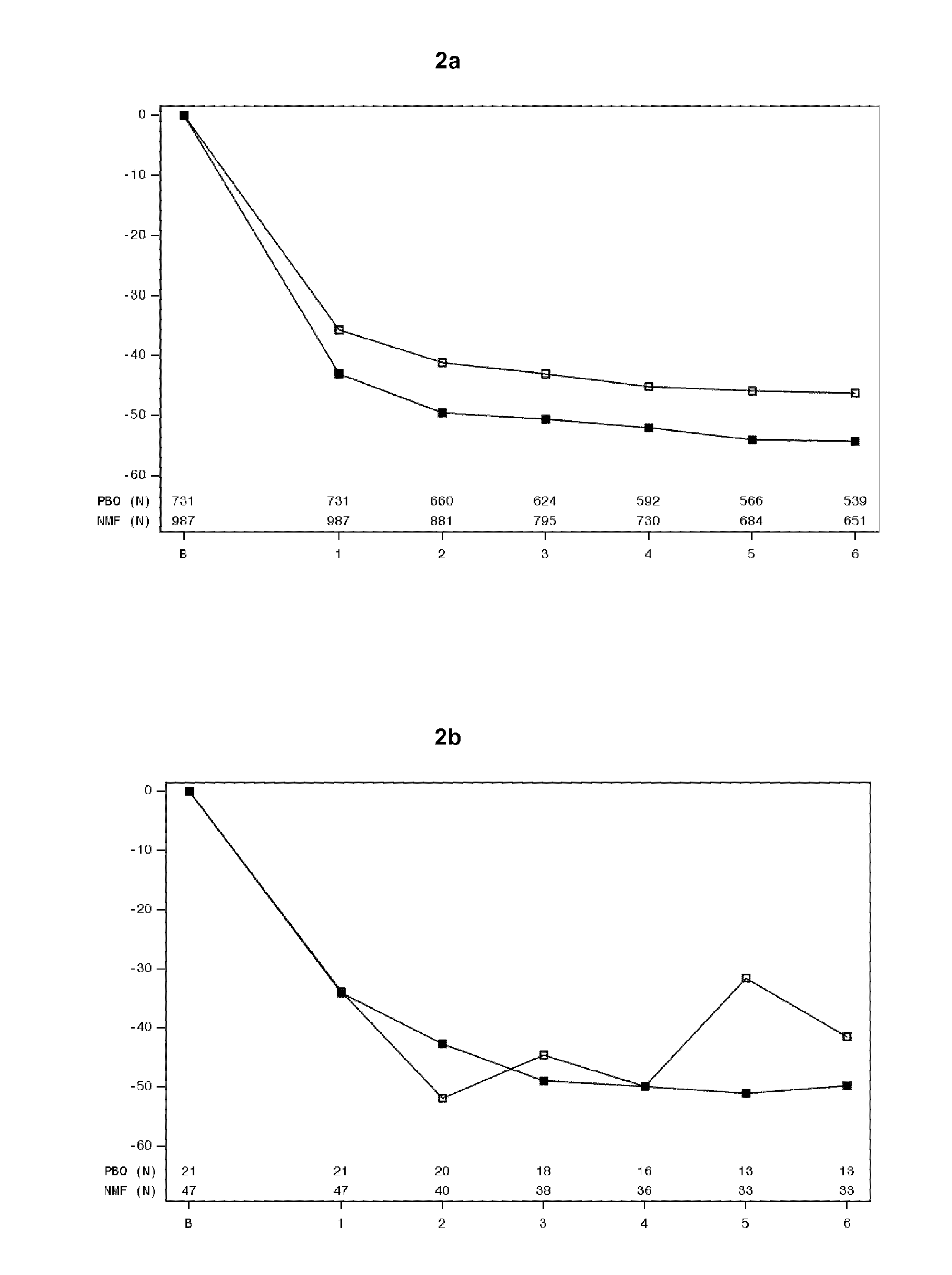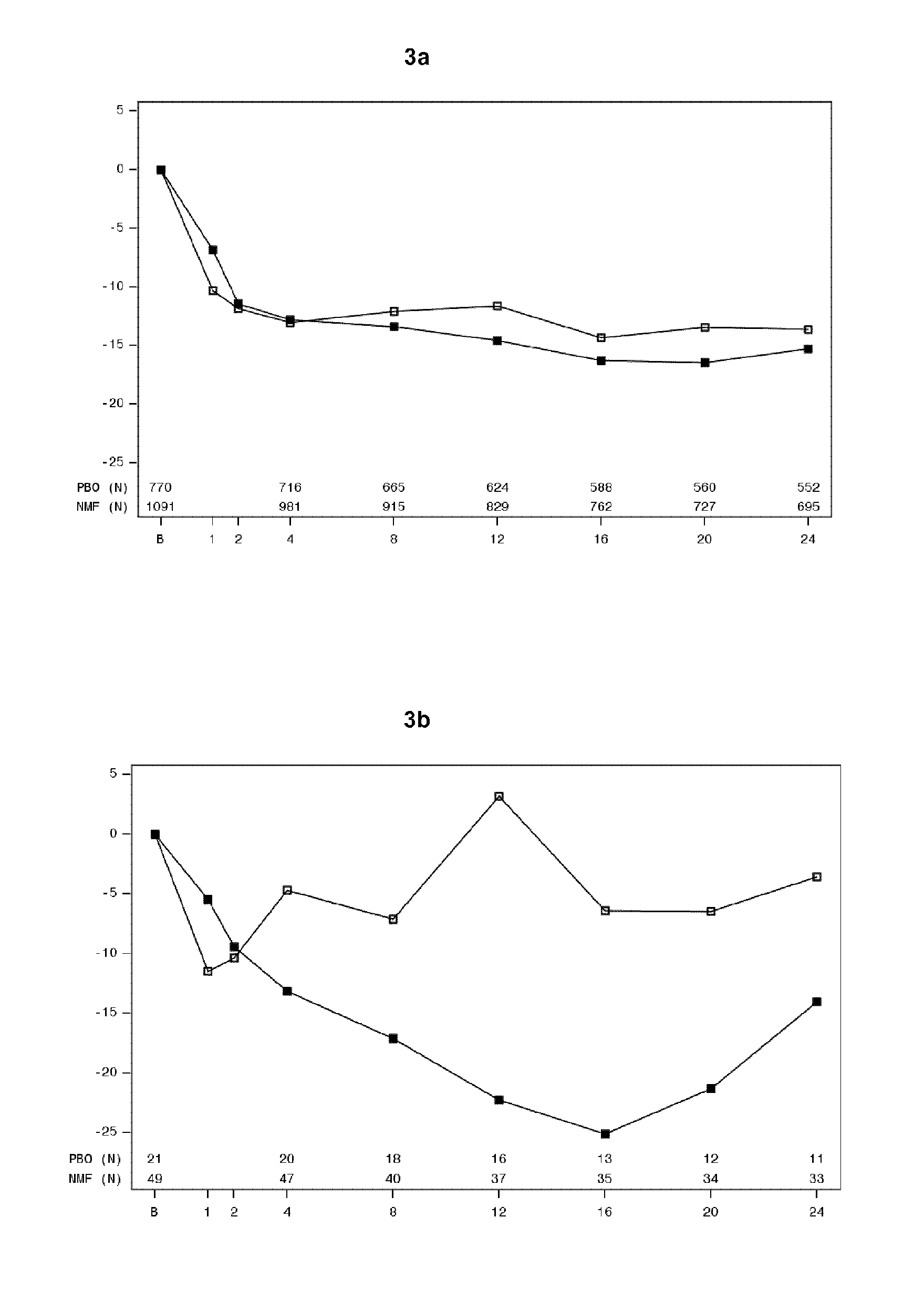Nalmefene for Treatment of Patients with Anxiety Disorder
a technology of anxiety disorder and nalmefene, which is applied in the field of nalmefene, can solve the problems of high lifetime comorbidity between depressive and anxiety disorders, increased risk of alcohol dependence for patients with anxiety disorders, and increased risk of comorbid anxiety disorders for patients with alcohol dependence, so as to reduce alcohol consumption
- Summary
- Abstract
- Description
- Claims
- Application Information
AI Technical Summary
Benefits of technology
Problems solved by technology
Method used
Image
Examples
example 1
Clinical Efficacy on the Reduction of Alcohol Consumption
[0160]The efficacy of nalmefene on the reduction of alcohol consumption in patients with alcohol dependence (DSM-IV) was evaluated in two efficacy studies (Study 12014A and Study 12023A) and a safety study (Study 12013A). All studies were multi-national, multi-site, randomised, double blind, two parallel group, placebo controlled studies. The efficacy was evaluated over 24 weeks of treatment. The studies included outpatients, aged ≧18 years, with a primary diagnosis of alcohol dependence. A patient was eligible for participation in the study if, in the 4 weeks preceding the Screening Visit, he / she had: ≧6 HDDs, ≦14 consecutive abstinent days, did not have serum aspartate aminotransferase (ASAT) and / or serum alanine aminotransferase (ALAT) values >3 times upper limit of the reference range, that are in the investigator's opinion clinically significant. Patients with psychiatric co-morbidity (that is, patients who used stable do...
example 2
Clinical Efficacy Measured by POMS Score
[0163]Assessment of POMs scores in Studies 12014A, 12023A and 12013A was used to evaluate the effect of nalmefene on mood states and mood changes throughout the study. Tables 5 and 7 indicate that patients with an anxiety disorder at baseline had higher POMS scores at baseline when compared to those without an anxiety disorder. The change in POMS scores from baseline are illustrated in FIGS. 3-9. FIGS. 3a-9a indicates that in patients without an anxiety disorder at baseline, the pattern in POMS score was stabile throughout the study with no pronounced difference between nalmefene and placebo. FIGS. 3b-9b indicates that the patients with an anxiety disorder at baseline who received nalmefene had a better POMS score at the end of the study than the patients with an anxiety disorder at baseline who received placebo.
[0164]In particular FIGS. 3b, 4b, 5b, 6b and 9b representing total mood disturbance, tension-anxiety, depression-rejection, anger-hos...
example 3
Clinical Efficacy Measured by SF-36 Mental Component Summary (FAS, OC)
[0167]Another method for measuring a patient's health status is by the SF-36 which is a patient-reported outcome developed as a general measure of perceived health status. The mental component summary score focuses on mental aspects of health related quality of life. Higher scores correspond to better health status or well-being.
[0168]Data on the mental component summary score are presented in Table 8 below. The difference between nalmefene and placebo in the change from baseline to Week 12 and Week 24 was more pronounced in patients with an anxiety disorder at baseline than in the patients without an anxiety disorder at baseline.
TABLE 8Change from Baseline to Week 12 and Week 24 in SF-36 MentalComponent Summary (FAS, OC) by anxiety disorder at baseline -Studies 12014A, 12023A and 12013A pooled.Anxiety disorderat baselineBaselineChange to Week 12Change to Week 24Treatment GroupNMean ± SENMean ± SENMean ± SENoPlace...
PUM
| Property | Measurement | Unit |
|---|---|---|
| time | aaaaa | aaaaa |
| anxiety disorder | aaaaa | aaaaa |
| co-morbid anxiety disorder | aaaaa | aaaaa |
Abstract
Description
Claims
Application Information
 Login to View More
Login to View More - R&D
- Intellectual Property
- Life Sciences
- Materials
- Tech Scout
- Unparalleled Data Quality
- Higher Quality Content
- 60% Fewer Hallucinations
Browse by: Latest US Patents, China's latest patents, Technical Efficacy Thesaurus, Application Domain, Technology Topic, Popular Technical Reports.
© 2025 PatSnap. All rights reserved.Legal|Privacy policy|Modern Slavery Act Transparency Statement|Sitemap|About US| Contact US: help@patsnap.com



